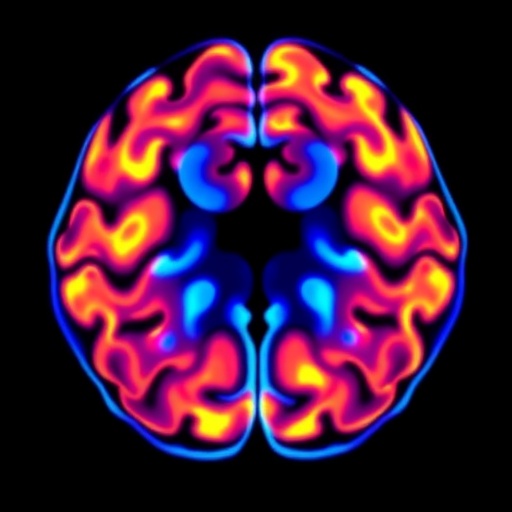In a groundbreaking study published in Nature Neuroscience, researchers have unveiled critical insights into the complex relationship between tau pathology and various risk factors in individuals both with and without cognitive impairment. By leveraging cutting-edge positron emission tomography (PET) imaging targeting tau protein deposits, the study delineates how tau PET positivity changes as a function of age, amyloid-beta (Aβ) status, APOE genotype, and sex. This advanced neuroimaging research marks a significant advancement in our understanding of Alzheimer’s disease (AD) and related neurodegenerative disorders, with deep implications for early diagnosis and personalized medicine.
Tau protein aggregation in the brain is a hallmark of Alzheimer’s pathology, second only to amyloid-beta accumulation. For decades, the scientific community has sought to ascertain how tau pathology correlates with the onset and progression of cognitive decline. Historically, amyloid-beta has been the focus of early AD biomarker discovery, but tau has increasingly gained prominence, partly due to its closer relation to neuronal damage and clinical symptoms. Using tau-specific PET ligands, clinicians and researchers can now visualize pathological tau deposits in vivo, providing an unprecedented window into disease mechanisms.
The multidisciplinary research team, led by Ossenkoppele et al., exploited an extensive cohort, encompassing individuals spanning a broad spectrum of cognitive states—from cognitively normal to various degrees of impairment. The participants underwent comprehensive neuroimaging and genotyping, allowing researchers to analyze several intersecting biological and demographic parameters. The core objective was to map the presence or absence of tau PET positivity, and understand how it interacts with normal aging, Aβ burden, genetic predisposition, and sex differences.
.adsslot_FPIVHrcNJA{ width:728px !important; height:90px !important; }
@media (max-width:1199px) { .adsslot_FPIVHrcNJA{ width:468px !important; height:60px !important; } }
@media (max-width:767px) { .adsslot_FPIVHrcNJA{ width:320px !important; height:50px !important; } }
ADVERTISEMENT
Age emerged as a dominant influence modulating tau accumulation, with positivity rates increasing substantially in older individuals. Yet, the researchers stress that tau deposition is far from a uniform process of aging: the interplay with amyloid-beta status creates a more nuanced landscape. Notably, tau PET positivity was significantly more prevalent among individuals with concomitant amyloid-beta pathology compared to those without, supporting the increasingly accepted hypothesis that amyloid-beta may create a permissive environment for tau spread throughout the cerebral cortex.
Moreover, the study illuminated the pivotal role of the apolipoprotein E (APOE) genotype, especially the ε4 allele, which is known as a major genetic risk factor for Alzheimer’s disease. Carriers of one or two ε4 alleles exhibited a higher probability of tau pathology even at younger ages and in the preclinical stages of disease. This finding highlights the potential of APOE genotyping as a stratification tool for identifying individuals at elevated risk for tauopathy, thereby enabling timely intervention strategies before cognitive symptoms manifest.
In addition to genetic and pathological factors, the researchers uncovered compelling evidence for sex-specific differences in tau accumulation. Women showed a distinct pattern of tau PET positivity compared to men, which may partly explain the higher incidence and prevalence of Alzheimer’s disease in females. These sex differences might be rooted in hormonal influences, differences in immune responses, or other molecular pathways yet to be fully elucidated, underscoring the critical necessity of incorporating sex as a biological variable in neurodegenerative disease research.
Methodologically, the use of advanced PET ligands that specifically bind paired helical filament tau ensures a highly sensitive and specific metric for disease staging. The imaging protocols integrated standardized uptake value ratios (SUVRs) obtained across multiple brain regions known to be involved in AD progression, such as the entorhinal cortex, hippocampus, and neocortex. Through sophisticated statistical modeling, including covariate adjustments for age, sex, APOE genotype, and amyloid status, the team was able to dissect complex interdependencies and isolate the individual contributions of each factor on tau pathology.
Importantly, the study also delves into the subset of cognitively unimpaired individuals who nevertheless display tau positivity on PET scans. This subgroup represents a critical window for early detection and possible therapeutic intervention, as tau accumulation could precede overt clinical symptoms by years or even decades. The ability to detect tau positivity prior to cognitive decline challenges previous paradigms and encourages a reevaluation of diagnostic criteria for preclinical Alzheimer’s disease.
Equally enlightening was the observation that tau PET positivity in amyloid-negative individuals was relatively rare and showed a different spatial topography compared to amyloid-positive cases. This suggests that tau deposition without concomitant amyloid-beta burden may signal alternative neurodegenerative pathologies or age-related tauopathies distinct from classical AD. Future longitudinal studies will be essential for unraveling these distinctions and understanding their prognostic implications.
The significance of combining genetic, molecular, imaging, and demographic data cannot be overstated. This multi-dimensional approach facilitates a precision medicine framework, wherein individuals can be categorized not only by clinical symptoms but also by their unique biological risk profiles. This specificity has clear ramifications for clinical trial design, enabling targeted enrollment and optimizing therapeutic outcomes by focusing on those most likely to benefit from tau-modulating interventions.
The findings also pose provocative questions about the mechanisms that drive sex-specific and APOE-modulated differences in tau pathology. For example, understanding whether these factors act synergistically or independently in promoting tau spread could unlock new therapeutic targets. Additionally, sex hormones might modulate tau phosphorylation or clearance pathways, suggesting that hormonal replacement therapies or modulators could influence disease trajectory.
From a translational perspective, the ability to identify tau positivity reliably in vivo promises to transform patient care. Clinicians might use tau PET imaging to personalize prognosis and stratify patients, choosing between available therapies or deciding on monitoring frequency. This is especially pertinent as emerging tau-targeting therapeutics enter clinical trials and require biomarkers to confirm target engagement and efficacy.
The study’s comprehensive dataset paves the way for further explorations into how environmental and lifestyle factors intersect with the identified biological variables. Understanding the modifiable risk component remains a priority, particularly as population aging continues globally and Alzheimer’s prevalence escalates.
Despite its strengths, the research team acknowledges limitations including the potential biases intrinsic to PET imaging sensitivity, the need for larger and more diverse cohorts, and the cross-sectional design, which can only infer but not prove causal relationships. Future longitudinal imaging studies, coupled with fluid biomarkers and cognitive assessments, will be paramount in charting the natural history of tau pathology across different populations.
In summary, Ossenkoppele et al.’s landmark study significantly advances our understanding of the interplay between tau pathology and critical biological factors in the aging brain. By highlighting how age, amyloid-beta status, APOE genotype, and sex shape the landscape of tau PET positivity, this research opens avenues for earlier diagnosis, better risk stratification, and the eventual realization of precision therapeutics in Alzheimer’s disease and related tauopathies. The convergence of genetics, imaging, and demographic science heralds a new frontier in neurodegenerative disease research, promising hope for millions at risk worldwide.
Subject of Research: Tau protein pathology as detected by PET imaging in relation to cognitive impairment, age, amyloid-beta status, APOE genotype, and sex differences.
Article Title: Tau PET positivity in individuals with and without cognitive impairment varies with age, amyloid-β status, APOE genotype and sex.
Article References:
Ossenkoppele, R., Coomans, E.M., Apostolova, L.G. et al. Tau PET positivity in individuals with and without cognitive impairment varies with age, amyloid-β status, APOE genotype and sex. Nat Neurosci (2025). https://doi.org/10.1038/s41593-025-02000-6
Image Credits: AI Generated
Tags: advances in Alzheimer’s biomarkersage-related tau positivityamyloid-beta and tau interactionscognitive impairment risk factorsearly diagnosis of Alzheimer’s diseasegenetics and Alzheimer’s diseaseimpact of sex on tau pathologyneurodegenerative disorders researchpersonalized medicine in neurologypositron emission tomography in neurosciencetau PET imagingtau protein aggregation significance





